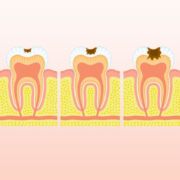The Bottom Line on Omega-3s
When you consider the research studies I reviewed last week and this week on omega-3 fatty acids, they may seem confusing. The reason is that in both of those studies, they were looking at very specific outcomes. In last Thursday’s memo, it was changes in the quantity of specific cytokines, chemicals that are inflammatory in nature. In the study from Tuesday, it was for reduction of cardiac events. There are other ways that omega-3s can contribute to health, and I thought a little review would be in order.
Cellular Membranes
Cells seem to work better when they contain omega-3 fatty acids. Remember, a cell has an exterior wall of a lipid bilayer. If the diet contains a high amount of saturated fat, a high amount of saturated fat becomes part of that lipid bilayer. If the diet contains more omega-3 fatty acids, whether by eating fish or by taking a dietary supplement, the cell membranes contain a higher proportion of omega-3 fatty acids. While the mechanisms are not known, the cells seem to function better when they contain more omega-3s.
Let me give you a couple of examples. Nerve tissue seems to function better when there’s a high amount of DHA in the bloodstream; DHA supplementation seems to be beneficial for nerve problems such as migraine headaches, depression, and Parkinson’s disease. It’s not a cure, but somehow the omega-3s become integrated into those nerve cells and they work better. The same holds true for the eyes; vision is dependent on the nervous system to operate properly, and high DHA appears to benefit eye health as well.
Hormone Control
The study I reviewed last Thursday focused on one type of inflammatory chemicals called the cytokines, but there are other pro-inflammatory hormones that may be better controlled with both high EPA and DHA supplementation. Cortisol is a known stress hormone. In times like we’re experiencing now and for those who are overweight or obese, cortisol levels are higher; that may be due to the increased presence of saturated fat. If omega-3s become part of triglycerides, the potential for inflammatory hormones such as cortisol can be decreased.
There’s also the possibility that persistent use of both EPA and DHA reduces atherosclerotic plaque, the hard layer of fat that builds up in arteries, or it may prevent cholesterol from being manufactured in the first place. While it’s too long of a process to explain in a Memo, our bodies make cholesterol two carbon molecules at a time. When there’s a higher amount of saturated fat, the process can speed along unabated; but when there’s a high percentage of omega-3 fatty acids present, the process gets interrupted. We don’t know the mechanisms; we just know omega-3s help.
The Bottom Line
Those are some of the possible ways omega-3 fatty acids are used for our health. Undoubtedly there are many more that haven’t been discovered or haven’t been examined in enough clinical trials at this point. The most important thing for you and me is to make sure that either we eat several servings of fatty fish per week or we take up to four grams of high EPA-DHA omega-3 supplements every day—let the science work it out later. Our job is to provide our body with nutrients that are beneficial.
What are you prepared to do today?









